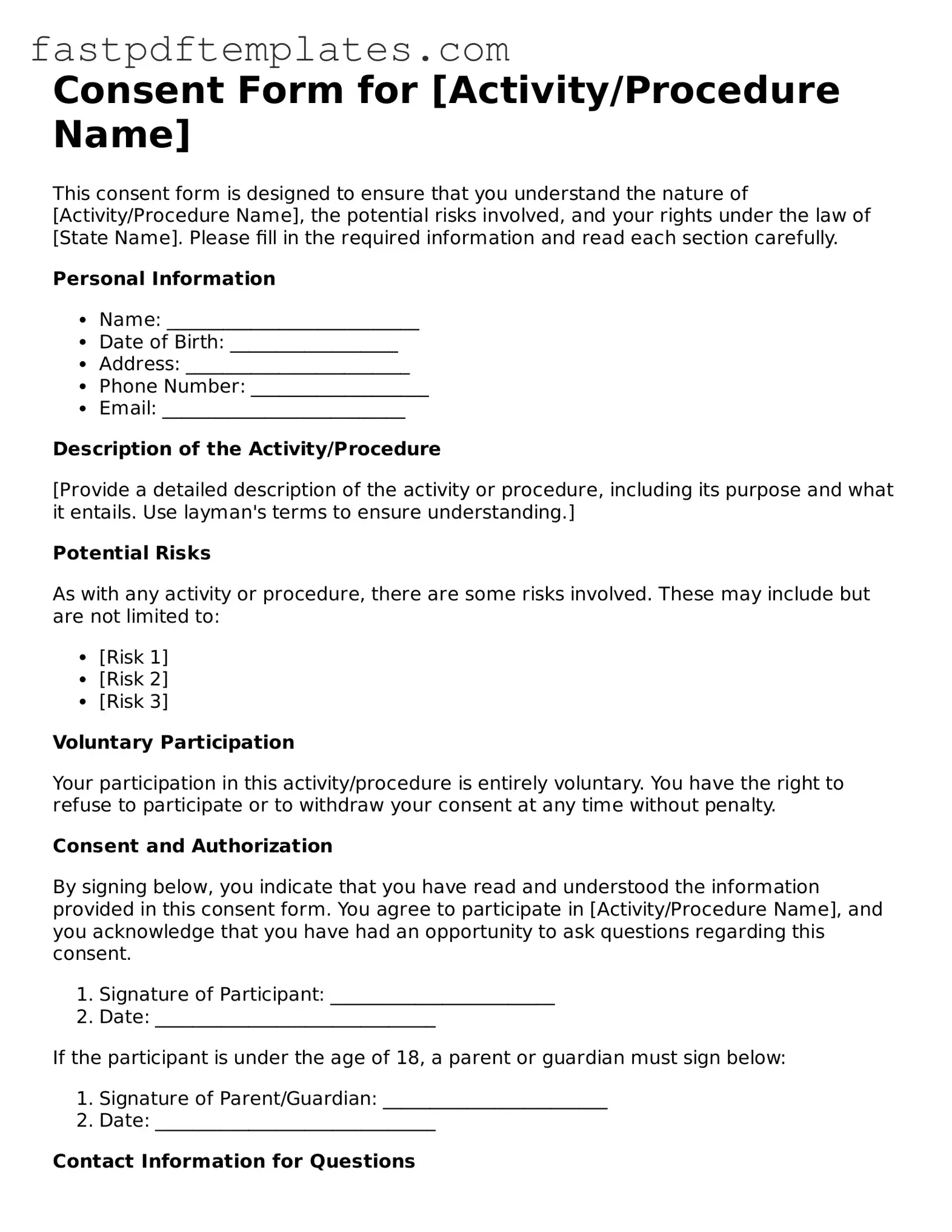Consent Form for [Activity/Procedure Name]
This consent form is designed to ensure that you understand the nature of [Activity/Procedure Name], the potential risks involved, and your rights under the law of [State Name]. Please fill in the required information and read each section carefully.
Personal Information
- Name: ___________________________
- Date of Birth: __________________
- Address: ________________________
- Phone Number: ___________________
- Email: __________________________
Description of the Activity/Procedure
[Provide a detailed description of the activity or procedure, including its purpose and what it entails. Use layman's terms to ensure understanding.]
Potential Risks
As with any activity or procedure, there are some risks involved. These may include but are not limited to:
- [Risk 1]
- [Risk 2]
- [Risk 3]
Voluntary Participation
Your participation in this activity/procedure is entirely voluntary. You have the right to refuse to participate or to withdraw your consent at any time without penalty.
Consent and Authorization
By signing below, you indicate that you have read and understood the information provided in this consent form. You agree to participate in [Activity/Procedure Name], and you acknowledge that you have had an opportunity to ask questions regarding this consent.
- Signature of Participant: ________________________
- Date: ______________________________
If the participant is under the age of 18, a parent or guardian must sign below:
- Signature of Parent/Guardian: ________________________
- Date: ______________________________
Contact Information for Questions
If you have any questions concerning this form or your rights, please contact:
- Name: ________________________
- Phone Number: __________________
- Email: __________________________
Thank you for your time and consideration. Your health and well-being are of paramount importance.
